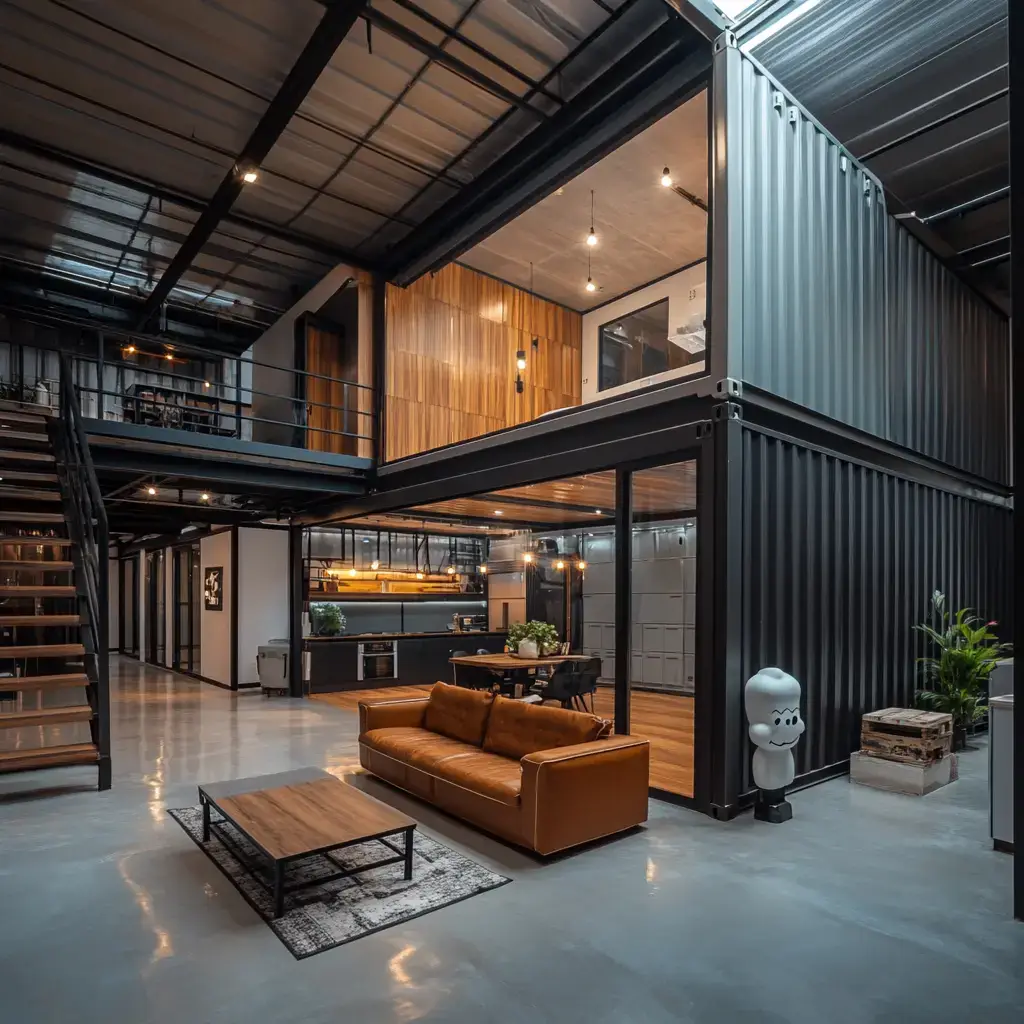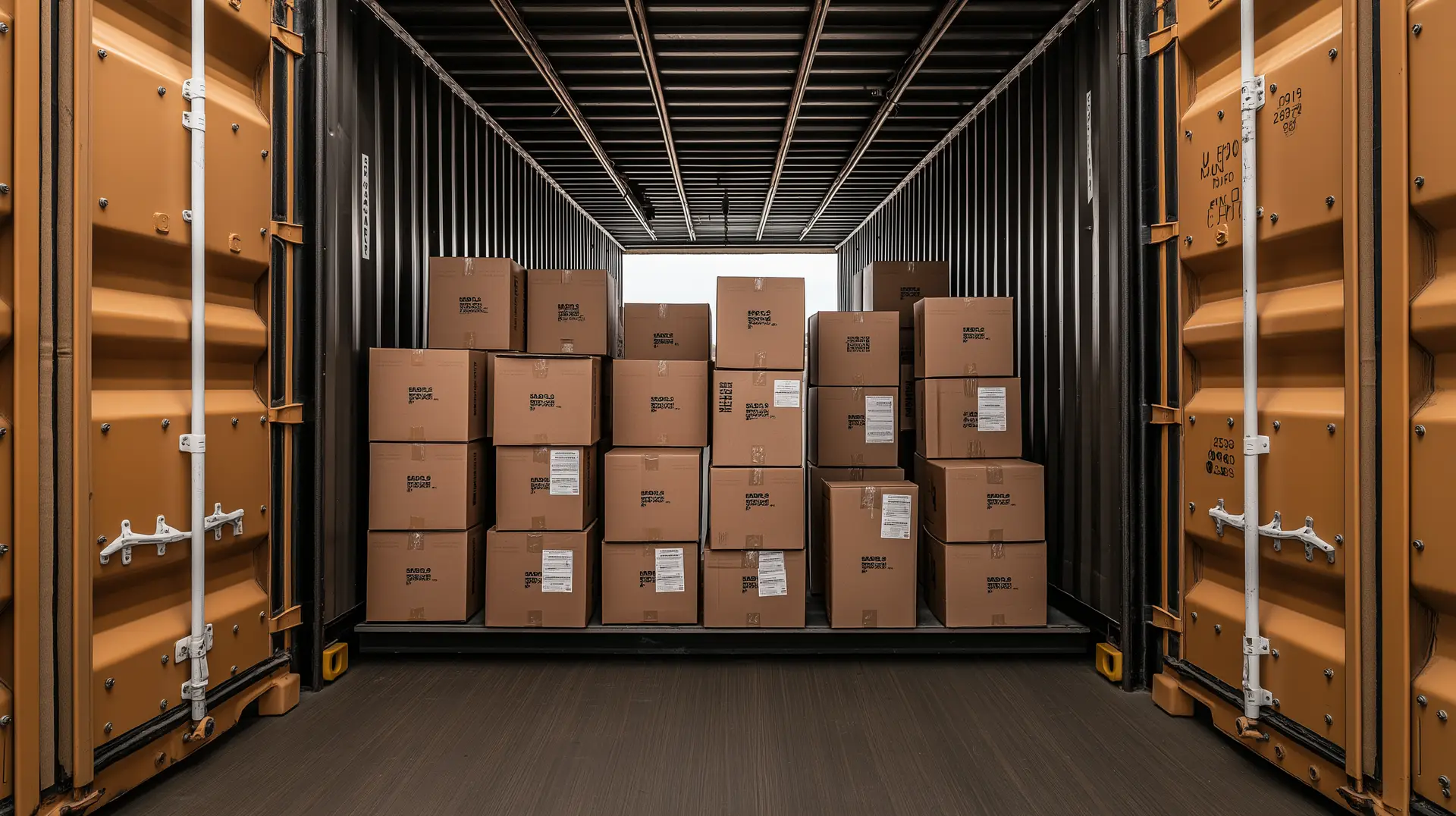Ever Wondered Which Storage Option Reigns Supreme?
Storing your worldly goods in Britain—land of drizzle, cramped terraces, and a peculiar obsession with garden sheds—can feel like a right faff. So, when it’s time to stash your stuff, do you plump for a rugged shipping container or a trusty self-storage unit? With council rules, unpredictable weather, and the Great British knack for hoarding, picking the right storage solution is no small feat. Let’s dive into the nitty-gritty of shipping container storage versus self-storage, weigh up the pros and cons, and figure out which one’s your ticket to clutter-free bliss.
The Great British Storage Showdown
Picture this: your loft’s bursting with old Beano comics, your garage is a graveyard of broken lawnmowers, and the missus is threatening to bin your vinyl collection. You need storage, pronto. Enter two contenders: shipping container storage and self-storage. One’s a hulking steel box that could survive a zombie apocalypse; the other’s a neat little unit tucked away in a facility that’s probably got better security than Buckingham Palace.
Shipping container storage is having a moment—think industrial chic meets practical genius. You can park it in your garden (if the council doesn’t kick up a fuss) or rent space at a yard. Self-storage, meanwhile, is the high-street darling, with facilities popping up faster than Costa Coffee branches. But which one’s better for your dosh? Which keeps your treasures safe from damp and dodgy blokes with bolt cutters?
The answer’s not as simple as picking tea over coffee. Costs, accessibility, security, and sheer space all come into play. According to recent UK trends—cheers to a quick web trawl on 06 March 2025—self-storage is booming in cities like London and Manchester, while container storage is gaining traction in rural spots and among small businesses. So, grab a cuppa, and let’s unpack this storage saga to see which option deserves your hard-earned quid.
What’s Shipping Container Storage All About?
Shipping containers aren’t just for hauling tea across the Channel. These steel beasts—usually 20 or 40 feet long—are tough as nails, weatherproof, and roomy enough to stash everything from your nan’s antique dresser to a knackered Transit van. You can rent one and have it plonked in your back garden, or store it at a provider’s site. They’re a favourite with builders, farmers, and anyone who fancies turning one into a hipster shed-cum-office.
Self-Storage: The High-Street Hero
Self-storage is the more familiar face—think rows of units in a facility that’s cleaner than your mum’s kitchen. Sizes range from tiny lockers (perfect for your Doctor Who DVDs) to big units that’ll swallow a three-piece suite. Most places offer 24/7 access, CCTV, and sometimes climate control to stop your prized possessions turning into a soggy mess. It’s the go-to for city dwellers and anyone who doesn’t fancy a giant metal box blocking the view of their begonias.
Comparing the Two: Let’s Get Stuck In
Cost – Where’s Your Money Going?
Shipping Container Storage: Renting a 20-footer sets you back £80 to £150 a month, plus delivery if you want it at home (another £50-£100, depending on how far the lorry’s got to trundle). Buying one outright? That’s £1,500 to £4,000, plus council permits if you’re keeping it on your patch. It’s a chunky upfront hit, but if you’re in it for the long haul, it could save you a bob or two.
Self-Storage: A small 5×5-foot unit starts at £40-£80 monthly, while a 10×20-footer might sting you £120-£250. Prices soar in London (no surprise there) and creep up for posh climate-controlled units. No big upfront costs, just a monthly Direct Debit and a stern warning not to store your pet goldfish.
Verdict: Self-storage is kinder on the wallet for a quick fix; containers win if you’re storing a shedload for yonks.
Accessibility – Can You Get to Your Stuff?
Shipping Container Storage: Stick it in your garden, and it’s yours 24/7—no faffing with gate codes or dodging rush hour on the M25. If it’s at a yard, though, you might be stuck with 9-to-5 access or booking a slot like it’s a bloody dentist appointment.
Self-Storage: Most facilities give you a key fob and let you waltz in anytime, day or night. Handy if you’re a night owl or need your golf clubs at 3 a.m. Downside? You’ve got to schlep to the site, which is a pain if it’s miles from your gaff.
Verdict: Containers rule if they’re onsite; self-storage takes it for offsite convenience.
Security – Keeping the Neds at Bay
Shipping Container Storage: These steel titans laugh at rain and burglars alike. Slap a decent padlock on, and you’re sorted—though if it’s in your garden, you’re the security team. At a yard, you might get fencing and cameras, but it’s a mixed bag depending on the outfit.
Self-Storage: Facilities go all out—think CCTV, alarmed units, and gates that’d make Fort Knox jealous. Some even have staff eyeballing the place. Plus, climate control keeps your gear mould-free in our damp climate.
Verdict: Self-storage edges it for peace of mind; containers are solid if you lock ’em right.
Space – How Much Room Do You Need?
Shipping Container Storage: A 20-foot container gives you 1,150 cubic feet—enough for a tractor or your mate’s drum kit. A 40-footer doubles it. Great for big stuff, but you’re paying for the lot even if it’s half-empty.
Self-Storage: Units start at 125 cubic feet and go up to 900. Pick what fits, no waste. Perfect for a few boxes or a sofa, less so for a forklift.
Verdict: Containers for bulk; self-storage for precision.
Versatility – Fancy a Tweak?
Shipping Container Storage: You can pimp these bad boys—shelves, insulation, fairy lights, you name it. Need it moved? Call a truck. It’s the Swiss Army knife of storage.
Self-Storage: No DIY here. It’s a box, and that’s that. Climate control’s a bonus, but don’t expect to turn it into a home office.
Verdict: Containers for flexibility; self-storage for simplicity.
Case Study – Real UK Example (500 Words)
Take Dave from Devon, a small-time builder who hit storage gold with a shipping container. In 2023, he was drowning in tools, timber, and tiles, with his garage looking like a tip. Self-storage units near Exeter were too small for his gear and cost £200 a month for a decent size. Plus, the 20-mile round trip was eating his time and diesel money.
Dave opted for a 20-foot shipping container from a local firm, for £120 a month, delivered to his plot for £80. He bolted it down next to his workshop, added a heavy-duty lock, and chucked in some shelving from a DIY store. Total cost? £1,800 to buy it outright after a year, saving him £600 annually over renting a self-storage unit. The container’s weathered storms, kept his gear dry, and even survived a nosy fox.
Contrast that with Sarah in South London. She needed to store furniture during a flat move in 2024. A shipping container was overkill—her Clapham terrace had no space, and Lambeth Council would’ve had a fit. She rented a 10×10-foot self-storage unit for £150 a month, five minutes from her new place. With 24/7 access and CCTV, she popped in whenever, and the climate control kept her leather sofa mould-free. It was a no-brainer for her urban lifestyle.
Dave’s container was a rural triumph; Sarah’s self-storage nailed city convenience. Both show how location and needs dictate the winner.
“Shipping containers are the Land Rovers of storage—rugged, versatile, and a bit OTT for popping to Tesco. Self-storage? That’s your reliable hatchback.” – Dave from Devon
Stumped on storage? Don’t wing it—check out our shipping containers today. Compare sizes, and lock in the best deal for your bits and bobs.
Read more articles in our blog










